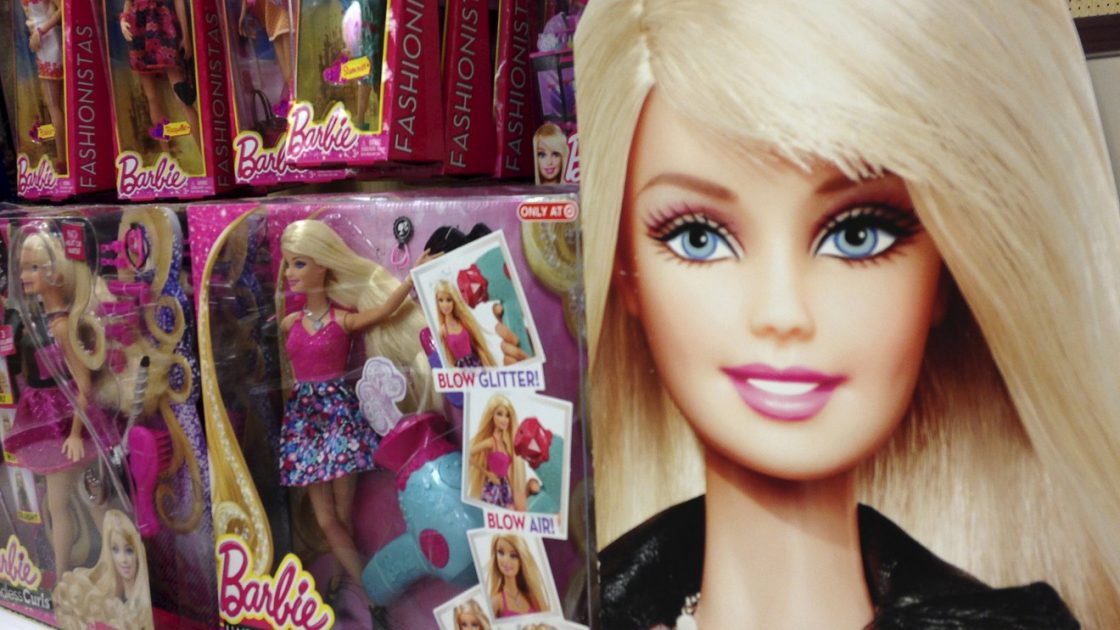By Jessica D’Amico, Media Management ’24
Since her creation in 1959, the Barbie doll has become one of the most iconic and beloved children’s toys in America. Everybody knows Barbie, and throughout the generations she has inspired thousands of young girls to dream of becoming just like her. In fact, the idolization of traditional Barbie for her perfect looks, talents and possessions prevailed up until a few years ago when people finally began to question what kind of message the doll was really portraying to her adoring and impressionable fans.
The Barbie commercial I’ve included above aired in 2007 when a girl my age would have been around 5 years old. The ad abruptly sparks to life with Barbie’s signature hot pink silhouette along with a lively, feminine vocalist singing, “Be who you want to be!”. The commercial then proceeds to show real life girls happily imitating everything that the Barbie dolls do; A clip of Fashion Barbie is followed by a girl walking the runway in stylish clothing, and a clip of Popstar Barbie is followed by some extravagantly done-up girls performing glamorously on stage. Other occupations and hobbies are portrayed by the girls, such as ballet dancing, cooking and tame horseback riding, all to the spritely and upbeat background track reassuring the viewer that as a Barbie girl, you can do and be anything.
However, do the ad’s visuals contradict the sugary sweet message of the commercial’s seemingly empowering anthem? If Barbie says that girls can do anything, why is she only seen endorsing stereotypically “feminine” activities and occupations? This hypocritical contrast between the commercial’s intended message and the commercial’s choice of visuals exposes the key issue with early 2000’s Barbie: through the advertising and marketing, girls were subconsciously learning to abide by gender expectations being exemplified by their favorite toy.
It’s no coincidence that in the commercial, Barbie and her girlfriends are only seen doing things like modeling and ballet dancing. None of the dolls are shown wearing a lab coat or a police uniform, and none of the tween actors are shown playing rough and tough basketball, standing patriotically at the head of a podium or pitching an idea to a board room full of people. These production choices convey a message to viewers, whether they are old enough to be aware of it or not, that girls are supposed to do things that are feminine, conventional, and polite. Instead of dreaming to one day become doctors, engineers or professional athletes, girls should set their sights on the things that society expects them to–things that are traditionally and unremarkably “female”.
Like Barbie dolls and thousands of other varieties, toys and how they are marketed play a huge role in developing how a child first understands the world around them. However, because of the alarmingly gender-stereotyped toy market that still exists today, it is almost impossible for children not to absorb socially constructed norms about gender. From watching commercials such as this one for Barbie, children come to learn that girls play with dolls, and boys do not. Girls can dream of becoming pop stars and models, but it is strange for them to want to play aggressive sports or video games, because that’s what boys do. These are only a few examples of the subliminal messages conveyed in the production and design choices of children’s toy advertisements.
Since the 2010’s, Barbie and her crew have undergone somewhat of a makeover. When creators at Mattel began catching backlash for portraying Barbie in stereotypically “feminine” ways, new versions of the doll were released that began to step outside the box of typical hot-pink, fashionista Barbie. Today, girls and boys alike can buy dolls such as Doctor Barbie, Photojournalist Barbie, Pilot Barbie and even Astrophysicist Barbie. With this in mind, it is reassuring to know that in small ways such as the recent rebranding of Barbie dolls, toys and how they are marketed are beginning to catch up to the evolving gender constructions becoming prevalent in our modern society. After all, girls can be whoever they want to be–and it’s about time their toys actually reflect that.
